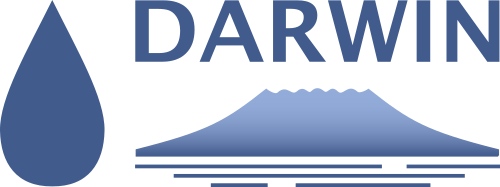MORE STEP – Mobility at risk: Sustaining the Mongolian Steppe Ecosystem [funded by BMBF] - Status: closed
Project staff:
Prof. Dr. Jörg Bendix
Abstract:
| The Mongolian Steppe Ecosystem (MSE) is the largest area of mostly-intact steppe ecosystem worldwide and shows the tight links between societal and natural processes. On the one hand it has experienced thousands of years of apparently sustainable land use by nomadic pastoralists, while it is also known for the distinctive communities of wild herbivores featuring vast migrations of ungulates. At least one million Mongolian gazelles (Procapra gutturosa), and one of the largest populations of Goitered gazelle (Gazella subgutturosa) move hundreds or thousands of kilometers across this dryland ecosystem each year. Mongolia’s climate is characterized by extremes, with cold winters, hot summers and an extreme unpredictability of conditions. For its people, i.e. nomadic pastoralists, as well as for wildlife, i.e. migrating ungulate herds, mobility is key to cope with high spatial and temporal variability in resources. While the intact state of the MSE at this point in time is still unique, continuing major social-ecological transformations have led to dramatic changes in the steppe landscape in recent years. Mongolia is currently one of the fastest growing economies in Asia. Economic growth has led to major societal and economic transitions, exemplified by an increasing rate of land-use change and growth of extractive industries. Large-scale extractive industry projects and the construction of major rail and highway corridors that facilitate access to international markets have led to increasing fragmentation of the formerly barrier-free landscape. These new developments often pose insurmountable barriers for moving ungulates, which could lead to the loss of these species. As a consequence of the rapid urbanization rate, many herders move close to population centers. This development leads to a concentration of livestock that is much less mobile than under the traditional herding regime, which then causes biodiversity loss, soil degradation, vegetation change and reduced overall productivity. In addition to and interacting with these societal changes and the direct anthropogenic effects of land-use change, the Mongolian steppe landscape is increasingly affected by climate change. Extreme climate conditions such as severe winter storms (dzuds) and droughts are critical factors driving the mobility of people and wildlife and causing a general vulnerability of Mongolian society. Decreasing mobility of livestock and wildlife may be particularly detrimental in combination with an increased frequency of extreme events and may lead to a tipping point with regard to the overall carrying capacities of wildlife and livestock. |  |
Description:
The project aims to identify the safe operating space for human impact on the MSE by determining sustainability with regard to mobility. To do so, we will develop indicators that will allow us to forecast critical threshold values for landscape permeability under different scenarios of social-economic and climate change. The key goals of our research in particular are
- to identify which mechanisms and interactions are the key regulating mechanisms that could lead to the tipping point
- to assess how imminently the steppe ecosystem will reach the tipping point and identify the social-ecological settings that are driving it towards this point, and
- to develop sets of indicators and actionable recommendations for stakeholders and decision makers that will best avert reaching the tipping point.
Thus, our research program will answer key questions concerning the important feedback loops within the MSE ecosystem: How are changes in the social-ecological setting of the MSE affecting mobility of wildlife and herders? How are these social-ecological changes interacting with vegetation communities and changes in climate? Could these system alterations together result in feedback loops that ultimately lead to irreversible loss of carrying capacities of large mammalian herbivores? As outcome, our project will provide a better understanding of the interrelation between natural processes (migration of wildlife species, vegetation degradation) and societal processes (e.g. urbanization, change in nomadic living in Mongolia). We will provide mechanisms by which sustained long-distance animal movements and traditional pastoralism can co-exist with modern developments that spur economic growth.

Publications and poster presentations:
2023 - Dashpurev, B.; Dorj, M.; Phan, T.N.; Bendix, J. & Lehnert, L. (2023): Estimating fractional vegetation cover and aboveground biomass for land degradation assessment in eastern Mongolia steppe: combining ground vegetation data and remote sensing. International Journal of Remote Sensing 44(2), 452--468.
2021 - Dashpurev, B.; Wesche, K.; Jäschke, Y.; Oyundelger, K.; Phan, T.N.; Bendix, J. & Lehnert, L. (2021): A cost-effective method to monitor vegetation changes in steppes ecosystems: A case study on remote sensing of fire and infrastructure effects in eastern Mongolia. Ecological Indicators 132, 108331.
2020 - Dashpurev, B.; Bendix, J. & Lehnert, L. (2020): Monitoring Oil Exploitation Infrastructure and Dirt Roads with Object-Based Image Analysis and Random Forest in the Eastern Mongolian Steppe. Remote Sensing 12(1), 1-21.




